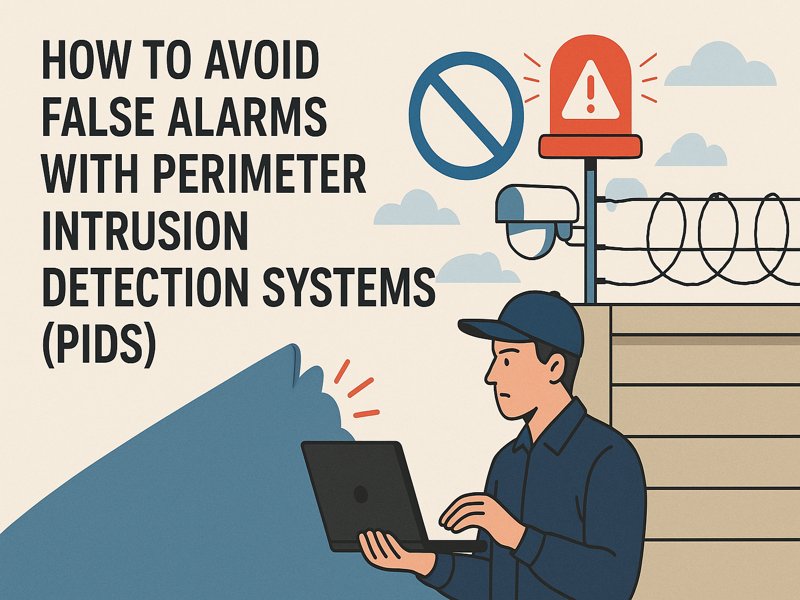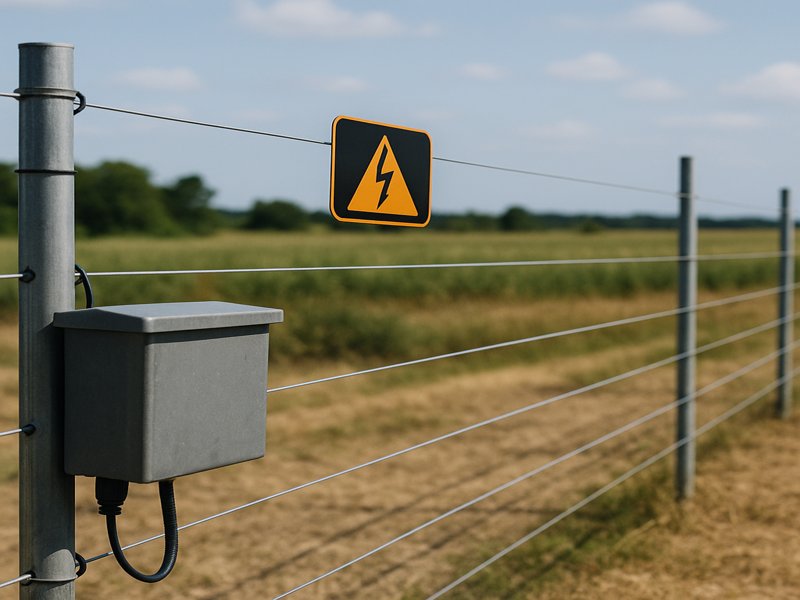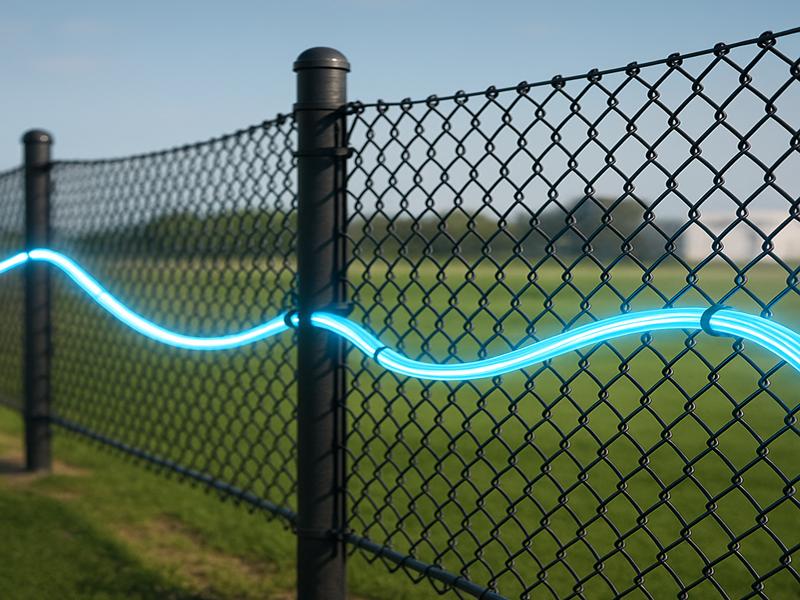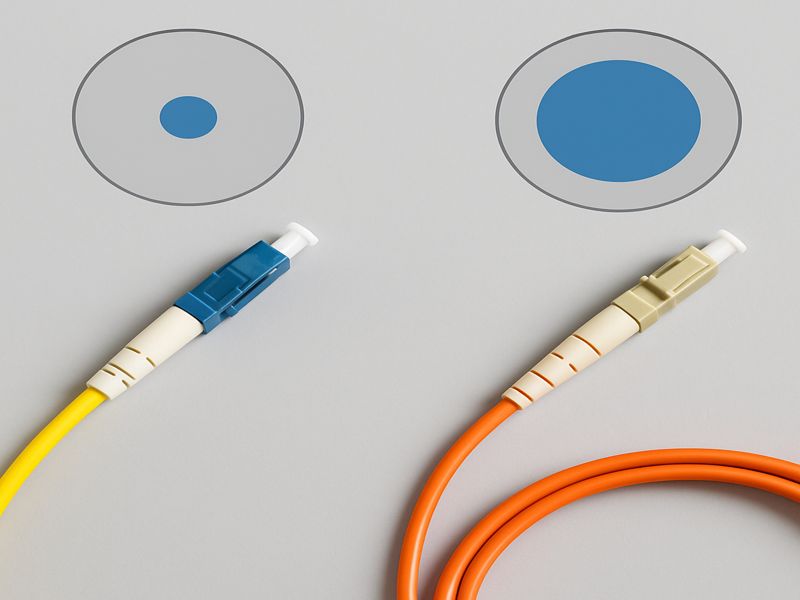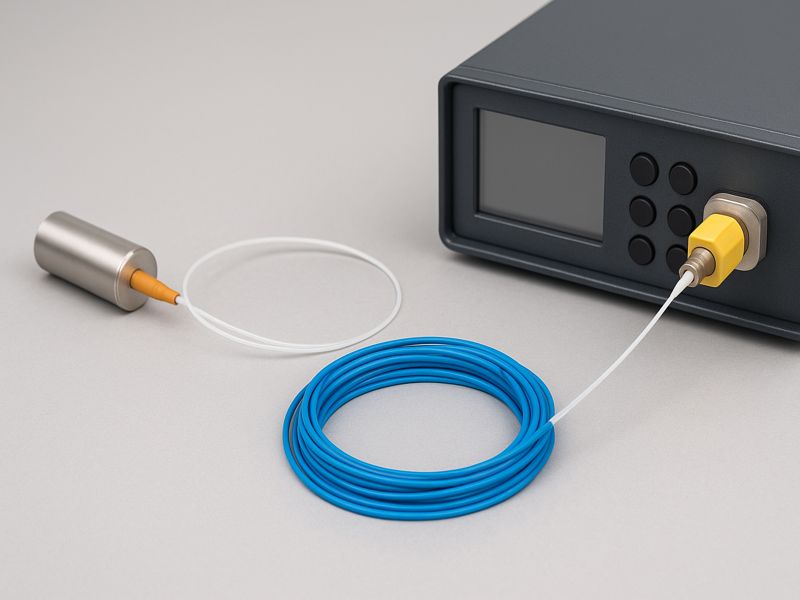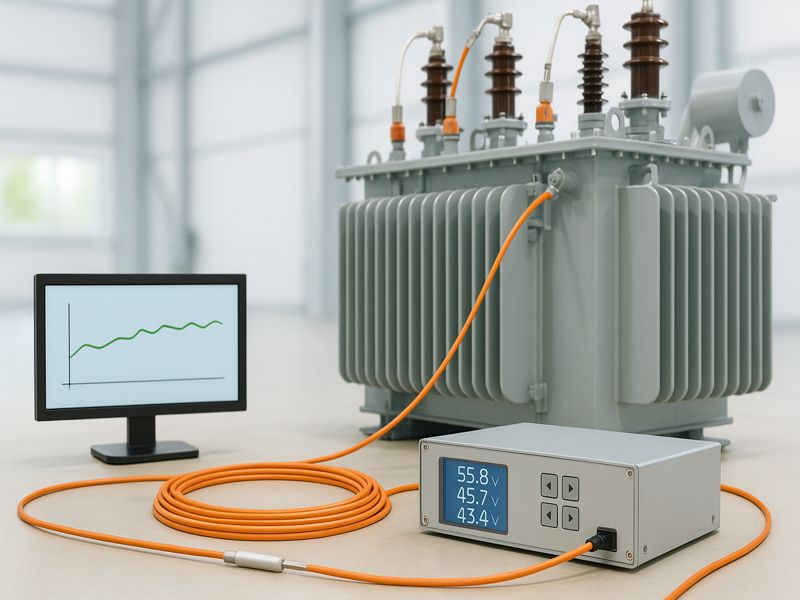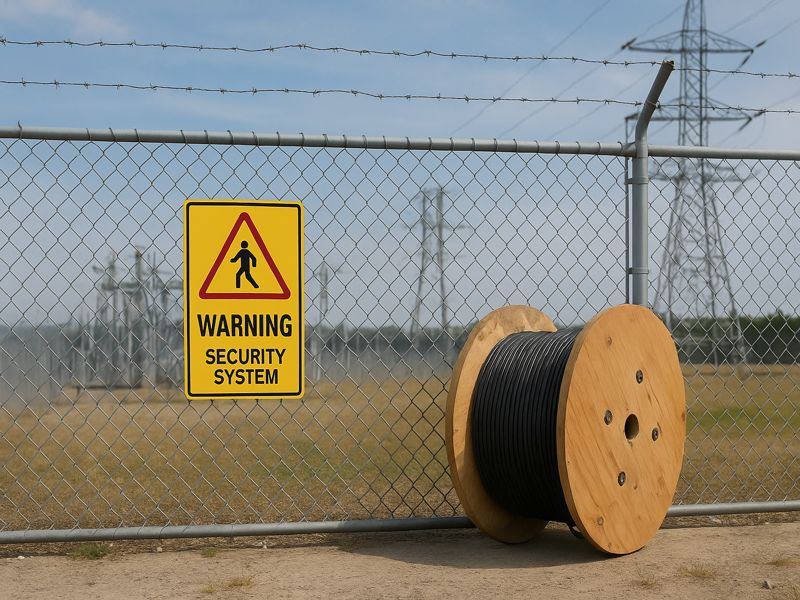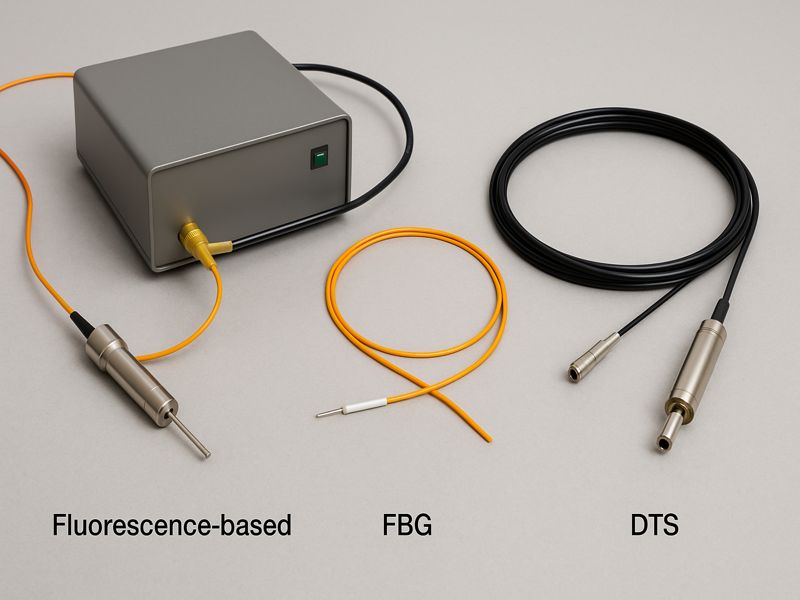Perimeter Intrusion Detection Systems (PIDS) protect critical infrastructure, industrial sites, government buildings, and private estates by detecting unauthorized access. A key challenge is false alarms, where the system mistakenly identifies an intrusion without a real threat.
False alarms undermine PIDS’ reliability, waste resources, and reduce effectiveness. Minimizing them is crucial for security. This article explores common causes and strategies to reduce false alarms.
Understanding Perimeter Intrusion Detection Systems (PIDS)
A Perimeter Intrusion Detection System (PIDS) consists of various technologies designed to monitor and detect unauthorized movements or breaches along a facility’s boundary.
Typical PIDS types include the following:
- Infrared sensors: Identify movement by using heat signatures.
- Fiber Optic Sensors: Detect vibrations or disturbances along a fiber optic cable.
- Radar systems: They detect movement by using radio waves.
- Electromechanical Sensors: Detect changes in pressure or displacement along fences or walls.
- Video Surveillance Systems: Use cameras combined with motion detection algorithms to monitor perimeters.
While these systems are highly effective, they can sometimes trigger false alarms, which occur when the system mistakenly identifies an innocuous event as a security threat. Minimizing these false alarms is crucial to maintaining a reliable and efficient PIDS.

Common Causes of False Alarms
False alarms in perimeter intrusion detection systems are caused by a number of sources. These elements typically have to do with the technology being utilized, the surroundings, and the system design.
Interference from the Environment
Environmental influences can have a big impact on false alarms. Common environmental causes include:
- Weather Conditions: Rain, wind, fog, snow, and temperature changes can all affect the sensors. For example, wind can cause motion sensors to detect movement, while rain can cause disturbances that trigger false alerts in systems like vibration sensors or infrared sensors.
- Wildlife Movement: Animals such as birds, rodents, or large animals like deer can cause disturbances that are incorrectly flagged as intrusions. For instance, animals might trigger motion sensors or vibration sensors on fences and barriers.
- Temperature Variations: Because infrared sensors rely on identifying heat signatures, they may be impacted by abrupt temperature fluctuations. Similarly, sudden temperature shifts can lead to fiber optic systems registering changes in the environment that are not related to actual intrusion.
Human Error
Sometimes, human error or misconfiguration of the PIDS can lead to false alarms:
- Improper Calibration: Incorrect settings for sensitivity or detection thresholds are among the leading causes of false alarms. For example, motion sensors may be set too sensitively, detecting even the smallest movement, such as swaying branches or debris blowing across the ground.
- Installation Issues: Poor installation practices, such as improper alignment or positioning of sensors, can create “dead zones” or overlapping detection zones. This can lead to both false positives (alarms triggered by non-intrusive events) and false negatives (actual intrusions not detected).
- Poor Integration with Other Systems: In some cases, PIDS are integrated with other security systems like video surveillance or access control systems. If not properly configured, these systems may generate false alarms by interpreting the same data differently.
Over-Sensitivity of Sensors
Over-sensitivity is one of the most common issues that lead to false alarms in PIDS. If the sensors are set too sensitively, they may pick up any movement or environmental change, regardless of whether it poses a real security threat. For example:
- Vibration Sensors: These sensors might register minor tremors caused by wind, rain, or even passing vehicles as significant threats.
- Infrared Sensors: These sensors might detect false positives if there are temperature fluctuations or heat sources like sunlight or nearby machinery that cause thermal signatures similar to those of a human body.
- Radar Systems: Over-sensitivity in radar systems can result in the detection of benign objects, such as birds, leaves, or small animals, triggering alarms unnecessarily.
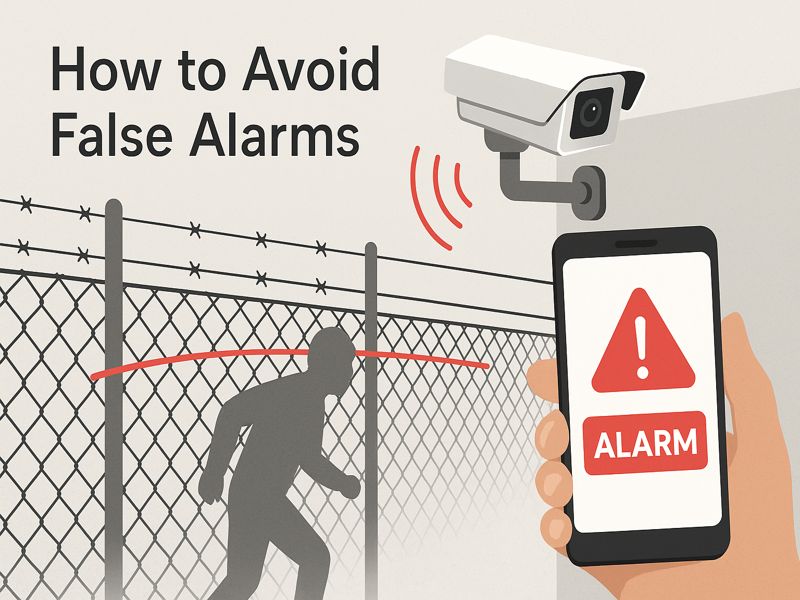
Correct Installation Is Essential
If put improperly, even the most sophisticated sensors will malfunction. Improper placement, insecure mounting, and inadequate planning create vulnerable zones and unstable detection ranges.
Installation Best Practices:
- Follow manufacturer-recommended spacing, angle, and height.
- Avoid placing sensors near air conditioners, trees, metal objects, or reflective surfaces.
- Make sure that wires are evenly covered by dirt and buried at the proper depth and spacing.
- Ensure fences are firmly anchored, not loose or swaying.
- Use shielding or barriers to protect sensors from direct wind or rain where appropriate.
Actionable Tip: Always conduct a site survey before installation to assess terrain, exposure, and risk factors. Hire trained technicians to perform or supervise the installation.
Strategies to Minimize False Alarms in PIDS
Minimizing false alarms is crucial to ensuring the reliability and efficiency of a Perimeter Intrusion Detection System. By implementing several key strategies, security teams can significantly reduce false positives while maintaining high detection accuracy.
Sensitivity Calibration
One of the simplest and most effective ways to reduce false alarms is to calibrate the system’s sensitivity levels correctly. Each sensor in the PIDS, whether infrared, vibration, or radar-based, should be carefully adjusted to respond only to significant disturbances that pose a real threat.
- Setting Optimal Sensitivity: The sensitivity of the system should be fine-tuned to detect intrusions (e.g., human movement, vehicle activity) while ignoring environmental noise (e.g., animals, rain, wind).
- Continuous Monitoring and Adjustment: Sensitivity levels should be monitored regularly and adjusted as needed, particularly when there are seasonal or environmental changes that could affect the system’s performance.
Combining Multiple Detection Technologies
Integrating multiple types of detection technologies can significantly reduce the occurrence of false alarms. By combining complementary systems, PIDS can leverage the strengths of each technology while compensating for the weaknesses of others.
- Video Surveillance Integration: Integrating video surveillance systems with motion detectors or infrared sensors allows for visual verification of alerts. Video analytics can be used to confirm whether an alert is a true intrusion, providing a higher level of confidence in the system’s alerts.
- Multisensor Fusion: Combining radar, vibration, and fiber optic sensors can enhance accuracy. Each sensor type can provide different types of data, and cross-referencing these can help determine whether an alert is truly valid.
- Environmental Sensors: Incorporating environmental sensors (e.g., weather sensors) can help filter out alarms caused by changes in weather conditions, such as wind or rain, that are not related to intrusion attempts.
Installing Environmental Compensation Systems
Environmental factors such as wind, rain, and temperature changes are significant contributors to false alarms in PIDS. Implementing environmental compensation systems can help mitigate the impact of these factors.
- Automatic Sensitivity Adjustment: Some advanced systems automatically adjust the sensitivity of sensors based on environmental conditions. For example, the system could reduce sensitivity during heavy rainfall or wind gusts to avoid triggering false alarms.
- Real-Time Weather Integration: Integrating weather data into the system can help prevent false alarms caused by rapid weather changes. The system can adjust its detection thresholds based on temperature fluctuations, humidity levels, or wind speeds.
Improving Installation Practices
Proper installation is crucial to the effective functioning of a PIDS. Poor installation is a common cause of false alarms, so ensuring that sensors are correctly positioned, calibrated, and integrated is essential.
- Strategic Sensor Placement: Sensors should be placed in optimal locations where they can accurately monitor the perimeter without interference from natural or man-made obstacles. For example, motion sensors should be mounted where they are least likely to detect animals or moving foliage.
- Reducing Environmental Interference: Sensors should be shielded from environmental disturbances wherever possible. This might involve using protective enclosures for vibration sensors or strategically placing radar systems to minimize interference from nearby structures or weather elements.
- Comprehensive Testing: Before activating the system, conduct thorough testing to ensure that the sensors cover all areas properly and that there are no overlaps or gaps in detection zones.
User Training and Awareness
Ensuring that security personnel are properly trained in how to respond to and configure the system is vital for minimizing false alarms. A greater comprehension of the system and its limits can often prevent false alerts.
- Training on System Calibration: Security personnel should be trained in how to calibrate the system and adjust its settings. Understanding the nuances of the system can help them troubleshoot issues and reduce false alarms effectively.
- Scenario-based Training: Training programs should also include scenario-based exercises where personnel can practice responding to false alarms. This will help them quickly identify legitimate threats from false positives in a real-world context.
Routine Maintenance and Health Checks
Like any technology, PIDS requires preventive maintenance to operate optimally.
Maintenance Checklist:
- Inspect sensors for dust, damage, rust, or animal interference.
- Every month or every three months, test the alarm triggers.
- Check for loose wiring, signal degradation, or software errors.
- Review event logs for abnormal activity patterns.
Most modern systems support self-diagnostics and remote monitoring, making it easier to identify issues early.
False alarms are one of the greatest challenges in operating a Perimeter Intrusion Detection System, but they are not an unsolvable problem. With the right strategies — from system selection and site preparation to installation, tuning, and verification — you can transform a noisy, unreliable system into a precise, intelligent security network.
